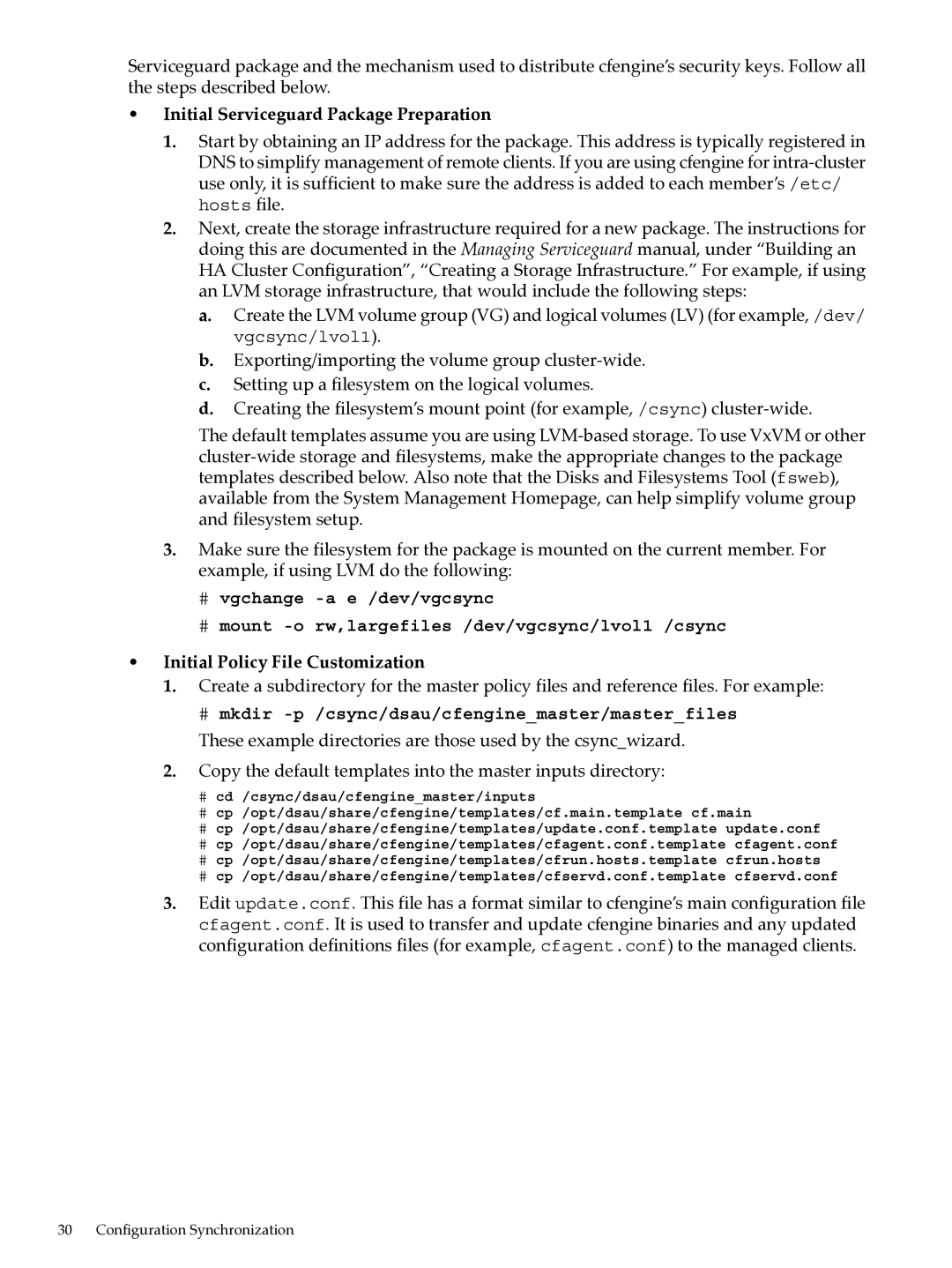Serviceguard package and the mechanism used to distribute cfengine’s security keys. Follow all the steps described below.
•Initial Serviceguard Package Preparation
1.Start by obtaining an IP address for the package. This address is typically registered in DNS to simplify management of remote clients. If you are using cfengine for
2.Next, create the storage infrastructure required for a new package. The instructions for doing this are documented in the Managing Serviceguard manual, under “Building an HA Cluster Configuration”, “Creating a Storage Infrastructure.” For example, if using an LVM storage infrastructure, that would include the following steps:
a.Create the LVM volume group (VG) and logical volumes (LV) (for example, /dev/ vgcsync/lvol1).
b.Exporting/importing the volume group
c.Setting up a filesystem on the logical volumes.
d.Creating the filesystem’s mount point (for example, /csync)
The default templates assume you are using
3.Make sure the filesystem for the package is mounted on the current member. For example, if using LVM do the following:
#vgchange
#mount
•Initial Policy File Customization
1.Create a subdirectory for the master policy files and reference files. For example:
#mkdir -p /csync/dsau/cfengine_master/master_files
These example directories are those used by the csync_wizard.
2.Copy the default templates into the master inputs directory:
#cd /csync/dsau/cfengine_master/inputs
#cp /opt/dsau/share/cfengine/templates/cf.main.template cf.main
#cp /opt/dsau/share/cfengine/templates/update.conf.template update.conf
#cp /opt/dsau/share/cfengine/templates/cfagent.conf.template cfagent.conf
#cp /opt/dsau/share/cfengine/templates/cfrun.hosts.template cfrun.hosts
#cp /opt/dsau/share/cfengine/templates/cfservd.conf.template cfservd.conf
3.Edit update.conf. This file has a format similar to cfengine’s main configuration file cfagent.conf. It is used to transfer and update cfengine binaries and any updated configuration definitions files (for example, cfagent.conf) to the managed clients.
